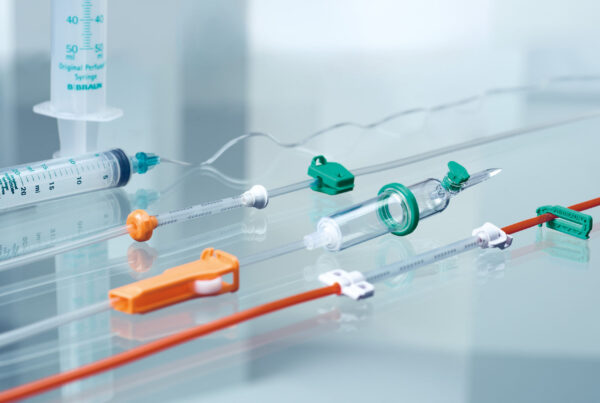A hot topic of conversation lately – the future of medical coding automation and billing. But are all types of coding automation the same? AI coding, autonomous coding and computer-assisted coding are just some of the buzzwords popping up in this space. In fact, according to a survey on hfma.org, “Among providers that do not yet incorporate autonomous coding into revenue cycle workflows, 20% plan to do so, and half of this segment plans to adopt a solution within six to 12 months.”
What does the future of automation for medical coding and billing look like? What do you need to know before pursuing medical coding automation solutions?
Different Types of Medical Coding Automation
You tend to hear the terms thrown around interchangeably, but AI coding, autonomous coding and computer-assisted coding actually mean different things.
What they have in common is they all talk about the process of automating your medical coding and billing processes. But how they do it – and how much manual work and human intervention is involved – is what makes them different.
AI Coding or Computer-Assisted Coding
When companies say they are doing AI coding today in the healthcare space, what they are actually referring to is the same thing as computer-assisted coding.
Computer-assisted coding (CAC) refers to software that analyzes and correlates words and sentence patterns from your patient encounter documentation and then recommends CPT/ICD codes that need to be billed.
The CAC accuracy rate is hard to say and often difficult to determine. To do this, the software must learn your tendencies/habits (an example is E&M visits and their complexity criteria so you can bill for the encounter correctly).
When it comes to AI, people want to automatically be able to pull all the billable codes from patient encounter documentation. Sounds simple, right?
The problem is that in the medical field, things are always open to interpretation. For example, if a doctor examines an endocrine system, how detailed did he or she go with testing? How would the system know if it was a complex review or not?
The same article by hfma.org goes onto say, “The market for autonomous coding is expected to reach $88 billion by 2030, up from $35 billion in 2022. That’s not surprising given that coding is the most labor-intensive aspect of revenue cycle operations and the most vital to reimbursement. “
The benefits of computer-assisted coding include:
- Reducing provider charge entry needs after training
- Improved time to billing
- Reducing coding staff, or redirecting coding staff to other more strategic business areas
Since it’s a relatively new field for the healthcare space, it’s ripe with potential challenges. Here are some things to consider if you’re looking into computer-assisted coding or AI coding:
- Manual work: A coder still needs to review the suggested codes, approve them or change them, before sending them to billing.
- Acceptable accuracy rates. Healthcare organizations typically expect at least 95% accuracy or else it would require too many revisions and too much back and forth to make computer-assisted coding useful. The accuracy depends significantly on the details in your patient documentation. If you don’t have certain keywords in the documentation that the software can scan, how accurate will the AI software be at pulling the correct codes? How accurate will it be at determining the complexity of the patient encounter and the level that must be billed?
- Extra initial provider effort. To achieve accuracy, computer-assisted coding requires a lot of training and a lot of feedback for the AI engine for it to learn and maintain accuracy
- Logistical challenges of implementing AI in a healthcare setting
- Privacy/security concerns regarding sensitive patient data
While AI coding sounds like an ideal next step for the technology industry, there’s still a lot up in the air that can lead to missed charges, inaccurate billing, and inefficiencies. These need to be worked out before you try to implement AI coding.
Final thoughts and questions to consider if you’re debating using CAC or AI coding:
- What is the minimum accuracy rate you need to justify implementing a solution like this?
- What is your definition of accuracy?
- How much are you looking to improve your level of accuracy with your coding?
- Aside from the popularity of AI, how in-depth have you researched it?
- How much time do you have to dedicate to inputting data into a CAC system?
Autonomous Coding
The term “autonomous coding” or “automated coding” refers to something different than AI coding.
True coding automation is 100% automated. Unlike computer-assisted coding, it’s looking at exact data in your system, and then determining the correct code to bill – not just suggesting codes based on your documentation.
It’s actually something that our infusion coding automation software, Charge Infusion, has been doing for decades.
When it comes to outpatient infusion, autonomous coding looks at all the data points, such as start and stop times, root of administration, etc., to automate the charge, and it will be correct based on the rules you put in place. So, if all the data is available, there is no room for interpretation of what the code should be. This is commonly referred to as data-driven coding vs. interpretive coding.
The benefits of autonomous coding include:
- No human interaction
- Less manual work
- Billing is 100% compliant with documentation
Since Charge Infusion automates the outpatient coding process for you, you don’t have to worry about missing charges or inaccurate billing, and you’re confident you’re recouping all the revenue you deserve.
In fact, one large hospital we audited had trained their coders to always round the infusion minutes down to the nearest 15-minute slice of time. That resulted in nearly $4 million in undercharged coding, fees they were due but were not charging for. Minutes make a difference, and automating their calculation is a much more accurate method than even the most experienced coder.
Aside from revenue increase, there are more benefits to automating your infusion.
The top 5 benefits of automating your coding workflows:
- No more inaccurate codes
- Coders can now focus on charges that have problems
- Reduced manual labor
- Reduce the burden of coding on your nurses
- More accurate codes = more revenue
Coding automation could save you thousands in revenue and decrease manual tasks that take up your coders’ time. What does the future of your organization look like with automated medical coding?
View Our AI Coding Automation Webinar
View our virtual webinar where we discussed all of the hype around AI and coding automation in healthcare: Click Here.
Get the latest updates and news delivered to your inbox.
Subscribe to our newsletter today.




